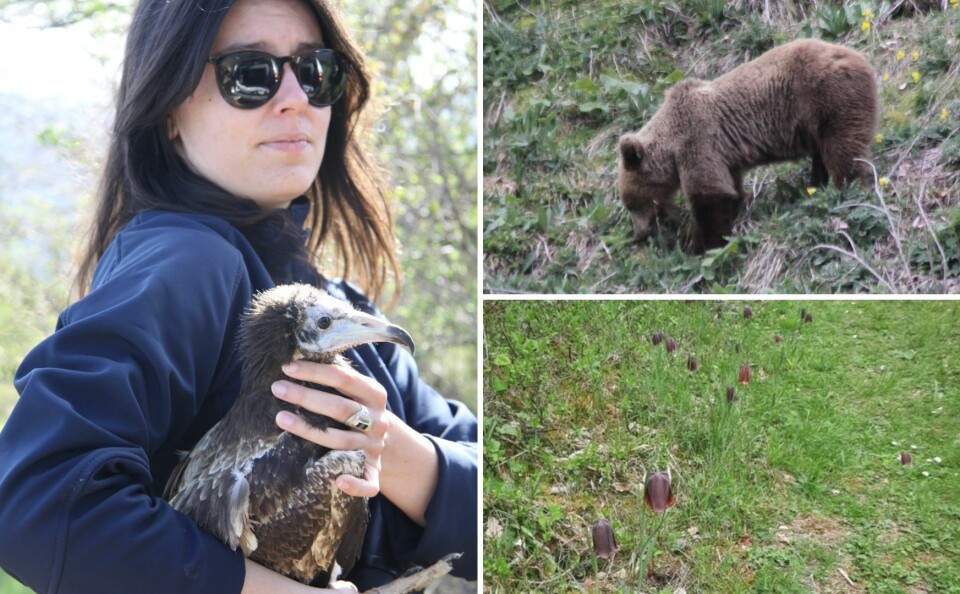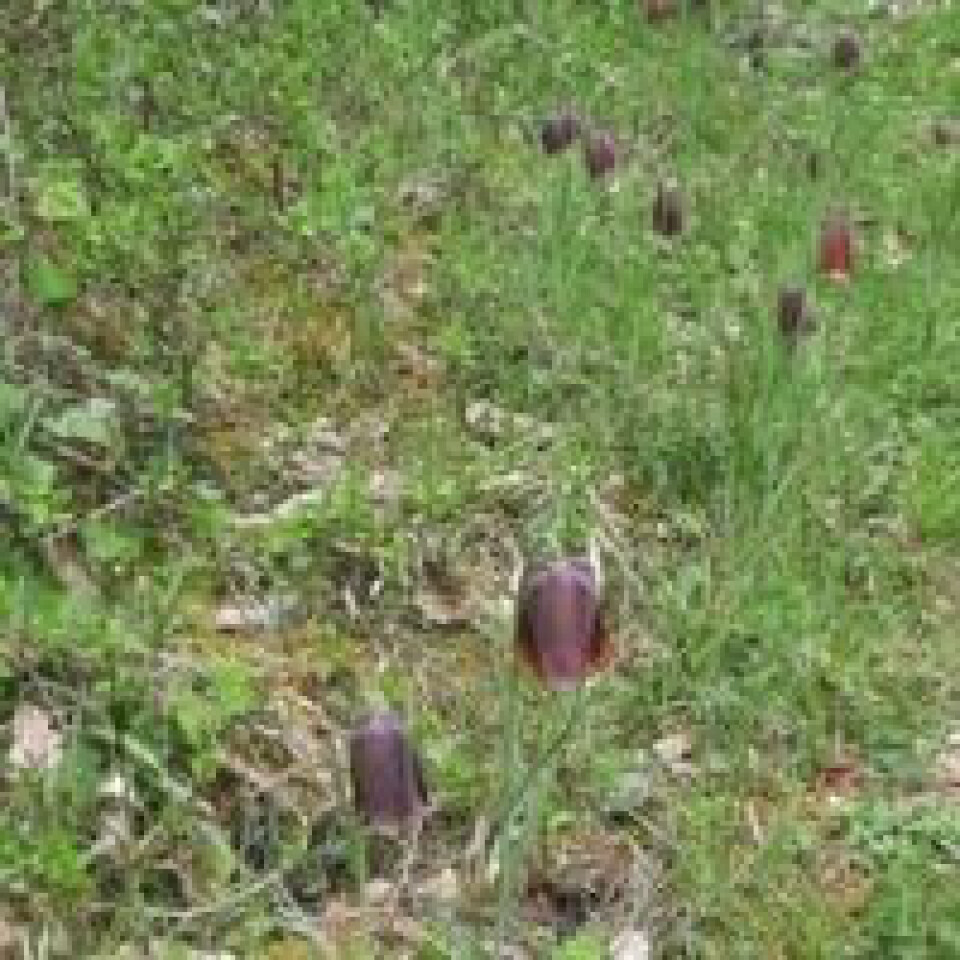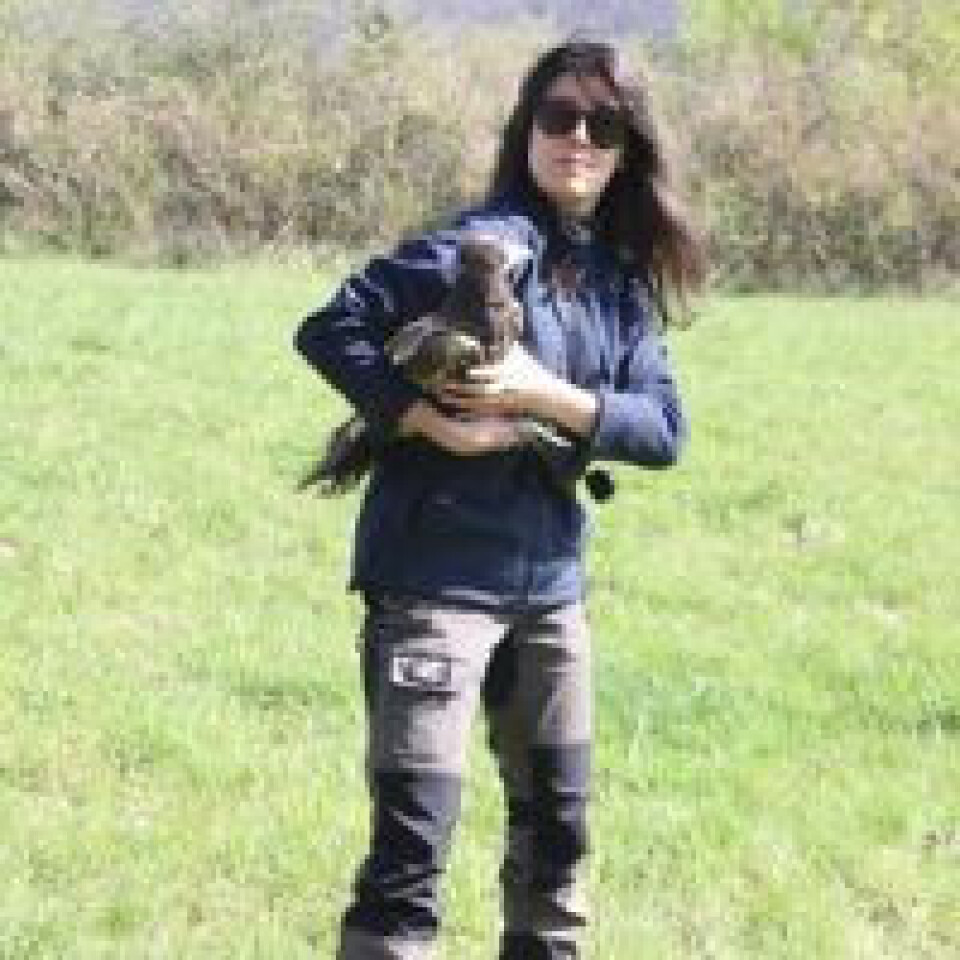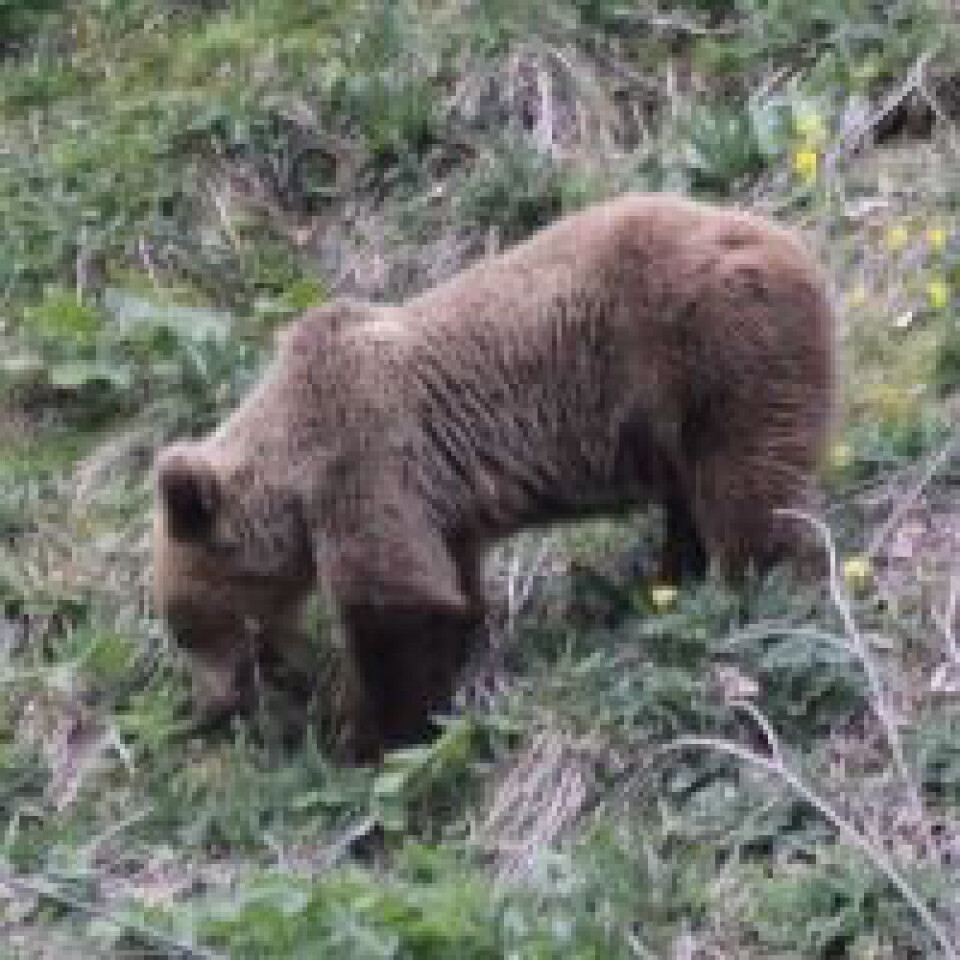-
‘The first baby hedgehog we rescued was love-at-first-sight’
We speak to an expert about her hedgehog health centre and how to make your garden more hedgehog-friendly
-
How endangered Iberian ibex is thriving after French Pyrenees comeback
Species is booming after a successful reintroduction programme, enhancing biodiversity and ecosystem health
-
The decline of turtle doves and memories of summer birdwatching in France
The dramatic fall in turtle dove numbers due to Mediterranean hunting, plus discover the unique sounds of birds like the nightjar and bee-eater
Nature watch: rescue vulture released in France, brown bear too ‘tame’
Wildlife spotter, Jonathan Kemp, shares the nature around his home in Aude and a disturbing encounter with a young brown bear

On a visit to the main hospital in the Aude I was delighted to come across a wild flower area where the patients wander and enjoy the freshness and the colours of the flowers.
There was a profusion of growth, sandwiched between the parking lots and, perhaps deliberately, the mortuary.
It was a sunny day, and there were a few butterflies (papillons) and other insects feeding amongst the vegetation, and some birds – mainly House sparrows (Moineau domestique) of course, but also a Blackbird (Merle noir) sitting under the solar panels that cover the parking, using the space as a sounding chamber – all busy going about their avian business.
Delicate fritillary along path

Fritillary (fleur de fritillaire) Photo: Jonathan Kemp
One of the Egyptian vulture (Vautour Percnoptère) nesting sites we visit is approached by a secluded path through a gorge with the sound of rushing water echoing from the cliff walls.
My personal favourite place to visit, elemental and powerful.
In contrast to the wild location, just for a couple of weeks there is a flourishing of a wonderfully coloured Fritillary (fleur de fritillaire), such a delicate flower, and this year there are more than ever lining the path.
Rescue vulture chick ready for release

Anna Terras, LPO employee releases vulture. Photo: Jonathan Kemp
I wrote last year about the rescue of a late developing Egyptian chick that has spent the seven winter months in a dedicated aviary rather than migrating to West Africa with the others of the species.
The member of the team, Anna Terras, that managed to find the floored fledging (now named Don Castagno) was given the honour of releasing the bird to the air, near a feeding station regularly visited by all three of our vulture species.
We were delighted to see it flying well, and it has been seen feeding since so is learning rapidly to live in the wild where it belongs.
Read more: Diary of a birdwatcher in France: The Egyptian vulture
Read more: Aude vulture watch station: What time of day is good to visit?
It is staying in the area where we released it, and has quickly attached itself to the other Egyptians that visit the station, learning from them; still not a strong flyer but has all summer until September to build up its flying skills before starting off on the hazardous migration to West Africa.
Bear spotting over the border

Young brown bear too close to road and humans. Photo: Jonathan Kemp
I have just spent three days in the Asturias region of Spain, part of the Cantabrian mountain chain that runs a little inland from the northern Atlantic coast.
Based in the Parque Natural de Somiedo, our guide Marcos has a dual role of working with the fundacionosopardo.org (Brown Bear Foundation) and also with a reputable tour organisation wildwatchingspain.com with whom I have made a wolf tour in the past.
You can sign up for a day trip, but this is risky, the weather in a high mountainous area can be misty, wet and cool, as was our last day, and can easily pass with no new sightings for us, despite many hours of scanning with binoculars and telescopes.
However, on the first two days we were lucky.
Foolish young bear not scared of humans
The first morning we sat on a hillside searching across the valley near the central town of Somiedo, and were rewarded with a brief sighting, so brief that I saw nothing more than a glimpse of brown fur disappearing into a wood.
Bears, like bear watchers, take siestas in the middle of the day, and so we joined up again after 18.00 and were driving up a windy road to another potential site when we came across two cars already stopped watching a young male browsing on grass (which is a large part of their diet when they emerge from hibernation in spring), but merely 40 metres away from where we stopped.
In truth this was a disturbing sighting, this foolish young bear should not have been so close to the road and should have rapidly run away from the human beings photographing and watching.
Marcos allowed us a few minutes, and having asked the other people to leave – which wasn’t really going to happen on a public road – called the park ranger on his phone – he arrived and took over the situation as we left.
Easy to forget bear danger
There is obvious danger in this situation both to the bear and to people.
If the bear is allowed to become habituated to human presence in this way it will lose its fear of traffic on roads and, being mainly nocturnal, accidents can happen.
Also, in their understandable excitement, people may be tempted to get too near to a dangerous animal.
A large male upright measures up to 2.20 metres and can run faster than a human being if provoked, weighs 300kg – and can climb trees.
As with many animals it is the females guarding their cubs that are the most dangerous, and recently a hunter in the Ariège in France came between a mother and cub, was mauled, and shot dead the bear.
The hunting federation had been warned in advance of the bear’s presence (some of the bears in France are located by GPS collars) and the hunt was illegal, and so there is a court case against the Fédération de Chasse concerned.
Read more: French hunters criticise arrest of man who killed bear in self defence
Nevertheless it was wonderful to see such a beautiful animal.
Mother bear and bear spotted
Next day we visited another valley, and were alerted by a friend of our guide to a female with its two yearling cubs (born about 16 months before) on the opposite hillside.
We watched from about 500 metres as they climbed the rocks and eventually disappeared over the crest; soon she will leave them and mate again, in fact a male may try to kill the young cubs if it believes they are not his and some fearsome battles take place between protective mothers and males.
If he succeeds in separating the cubs from their mother she is likely to come into oestrus (en chaleur), the hope being that the separated adolescents are mature enough to lead an independent life and keep out of trouble, until they too are ready to find a mate.
Wolves too quick for photo

Wolf poo and evidence of badger meal. Photo: Jonathan Kemp
We were also lucky to spot a couple of wolves, despite the fact that they are not common in the area.
It was about 11.00 in the morning, and they were purposefully trotting along a track, perhaps going back to a den after hunting for the cubs.
No photo, too far away and too quick, but I did spot some wolf poo, about 20 centimetres long and similar in its form to a fox.
It looked as if it had been scavenging on a badger carcass.
Related articles
Endangered vultures have laid eggs for the first time in French Alps
Brown bear numbers growing in French Pyrenees after reintroduction
Video: Wild wolf spotted in Brittany for first time in 109 years
























